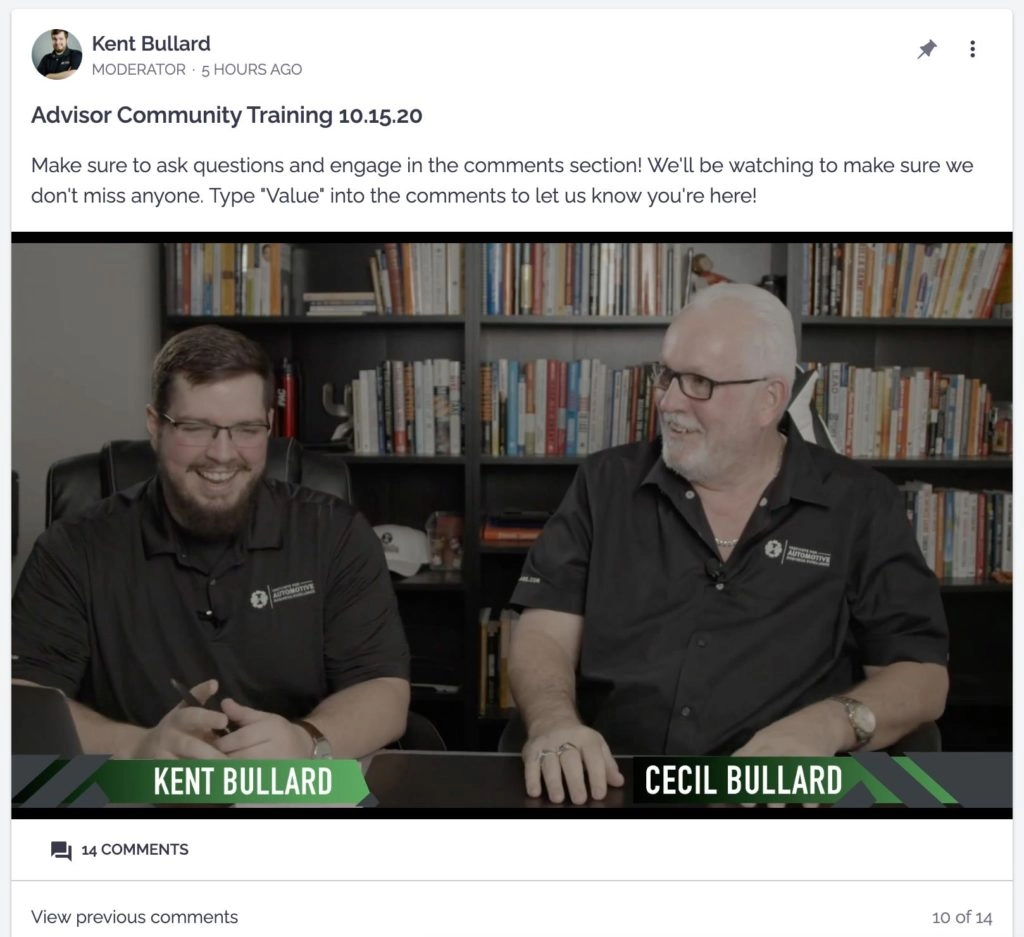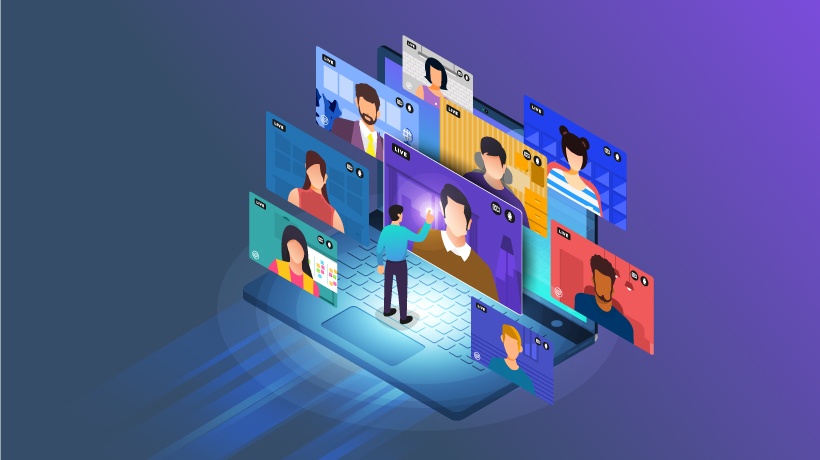5 Tips That Will Help You Level Up
eLearning has the power to bring world-class education to any part of the globe—whether it’s upgrading students’ certifications, teaching them the joy of a new skill or hobby, or helping them pivot their career. But traditional classroom experiences don’t always translate nicely to engaging online learning. Sticking to the status quo can mean a poor learning experience for students. That’s bad for business and a bad look for the eLearning industry overall.
Here’s how to avoid falling into the trap of boring lessons and keep your online students engaged. But first…
What Is Not Engaging?
"Talking at people, giving people some stuff to read, and then giving them a test."
That’s Professor Aaron Barth’s definition of a boring online course. As he explains in his TEDx talk [1], he struggled at first to adapt his teaching style to an online platform. It’s all too common for online corporate training, for example, to include a bunch of slides students have to read, some question-answer matching exercises, and then a quiz—which they may have to retake a dozen times before passing. Through trial and error, Barth learned that online students don’t want to be taught at. They want to be taught with. That means drawing on the power of stories—human stories—to create memorable experiences. It’s personal meaning, not clicking, that drives engagement.
Now let’s get into what is engaging.
How To Create A More Engaging Online Learning Experience For Your Students
To be powerful, online learning experiences also need to be meaningful. And that means the same ol’ teacher lecturing in front of a whiteboard isn’t going to work in online learning. Here are 5 ways to create meaningful experiences with your online course and keep students glued to your online classes:
1. Bring More Storytelling Into Your Teaching
Professor Barth notes in his TEDx talk that the earliest archeological evidence we have of human education used written or spoken stories to teach students lessons:
Our earliest instincts around education are actually based on storytelling… People teaching other people using human stories… It’s how we learned and it’s how we communicated. We know that scenario and story-based learning can accelerate our time-to-expertise on a given task because story simulates the way we learn through experience. Story-based learning is more engaging than click-then-quiz eLearning. Aaron Barth (thought leader and President of Dialectic) [2]
Here’s why this teaching method works: storytelling → empathy → personal meaning
We’re hardwired to empathize, and stories create empathy. From empathy comes personal meaning—and the ability to internalize what we’ve learned. By incorporating stories and having students act out or discuss scenarios, you can better teach complex skills like problem-solving, collaboration, and creativity. That keeps students coming back—and ensures they retain what they learn.
2. Create A Learning Community
We’re social animals. (Some of us more than others.) An online learning community brings social learning into the mix. Students get a place where they can discuss course concepts and answer each other’s questions, as well as collaborate on assignments.
Kate Baker [3] created a learning community called the Veterinary Cytology Coffeehouse [4] for veterinary professionals who want to learn more about veterinary cytology and hematology. In her first year, the group grew to 35,000 members without any advertising. But she didn’t start her group with the goal of commercialization; she was pulled into online education once her group members began increasingly asking for courses and more information.
Being involved in a community also creates a sense of accountability for students. They’re no longer isolated individuals answering questions on a screen. They’re part of something bigger.
"I have found the online experience of engaging an individual without a group energy present to be the most difficult to address."
Pauline Scanlon, Thinkific Course Creator
In more traditional classroom settings, it’s common for students to meet outside of class in study groups, either to review material or practice for a test. Try nudging them in this direction through your online course—perhaps with a quick tutorial on how to create a group calendar and set up their own Zoom meetings.
3. Do It Live
By going live with some of your lessons, you introduce a new social element. Suddenly, students can engage with you and with one another right away. They can get instant feedback and influence the direction of the lesson. And, when one student has a question, it’s likely others do as well; Q&A sessions become a powerful tool for identifying knowledge gaps.
Kent Bullard of the Institute for Automotive Business Excellence [5] uses Thinkific’s Communities tool to run live Q&As for students. The process is pretty straightforward.
"We have a casting setup, a port through Vimeo, and we embed the Vimeo URL directly into a community post," says Bullard. "We use the comment function to manage engagement for those particular trainings."
With this simple process, Bullard is able to bring a whole new dimension to his teaching style—and increase the value of his online course for students. For some topics, going live is a necessity. Especially if the topic you’re teaching requires practicing in front of each other and getting feedback in real time, like Jam Gamble’s course on public speaking.
Since my course focuses on building your confidence to amplify your voice, going live gives both my students and myself the opportunity to practice performing in front of each other and getting feedback in real time. It definitely has significantly increased student engagement. My community has told me they feel more accountable since each class is live and appreciate the support they receive from one another as they go through the course. Jam Gamble, Founder of Slay the Mic [6]
"One must have a lot of energy and passion to carry a 90-minute session," Jam shared with us. "For me personally, I have learned so much more about my teaching/coaching style since teaching live twice a week. It’s also given me the opportunity to reevaluate and make any necessary tweaks as I go along."
On Thinkific, you can incorporate live lessons into your online course using Zoom.
4. Have A Diverse Content Mix To Accommodate Different Learning Styles
The same content structure won’t work for every course or student you teach. The key to creating transformational learning experiences is to be adaptable and take advantage of differentiated instruction [7].
As a teaching philosophy, differentiated instruction acknowledges that different students absorb different information in different ways. For instance, someone who has difficulty understanding a concept by reading a long block of text may be able to learn it better when it’s presented in a video. For others, the ability to go back and reread sections of text at their own pace may be more valuable than an audiovisual presentation.
Here are some moves you can make to keep students engaged through differentiated instruction:
- Include more videos in your courses
Here’s a list of home video recording setups you can try [8], and some tips on how to create effective training videos [9]. - Make your presentations more dynamic
Prezi brings your presentations to life by using motion, zoom, and spatial relationships to present data [10]. - Level up your presentation with a voiceover
Create a voiceover presentation to guide your students through the slides while giving their eyes a rest and activating other senses [11]. Voiceovers allow you to replace text-heavy slides with images and diagrams without cutting content. - Make your lessons interactive
With H5P, you can create clickable quizzes, games, and other learning tools to help students explore your course topic from different angles and retain information [12]. Check out some example presentations [13]. The nice thing about H5P is that it integrates with Thinkific, so you don’t need to be a tech whizz to incorporate interactive content into your lessons [14]. - Keep an eye out for what works for others
Try some of the tips Esai Arasi and others have shared in Thinkific’s Course Creator Community for making your presentations more engaging.
"There’s a lot you can do with a presentation to make it engaging. It’s not just about the design. It’s about the whole picture."
Esai Arasi, Thinkific Course Creator
5. Flip The Script
It’s commonplace that the best way to learn a subject is by teaching it. So why not give your students the chance? There are two ways students can practice teaching what they’ve learned using synchronous and asynchronous learning:
- Synchronous learning
This involves interacting in real time, and it’s helpful for live classes. Create a breakout room in Zoom, and have your learning group reconvene after class to share what they’ve learned—either with you or with other students. This practice can be structured as formally or informally as you deem effective. - Asynchronous learning
After they complete a class, have students answer a question you pose or answer each others’ questions. Even by coming up with questions to ask their peers—taking on the role of a teacher giving a quiz—students will reinforce lessons they’ve learned.
The Last Word
Student engagement directly translates to online learning success. The more engaging your course is, the more valuable it is to students, and the more successful your course will be. By creating meaning, changing up teaching formats, and connecting directly with your students, you become a better teacher—and help your students become better learners.
Join the conversation! Share your online course engagement tips and get advice from a community of like-minded course creators.
References:
[1] Why e-learning is killing education | Aaron Barth | TEDxKitchenerED
[2] Aaron Barth, M.A., Ph.D'09 (Philosophy)
[3] The Veterinary Cytology Schoolhouse
[4] Veterinary Cytology Coffeehouse: Cases and Conversation
[5] Institute for Automotive Business Excellence
[6] Slay the Mic
[7] What Is Learning Experience Design? (Tips And Examples)
[8] How To Set Up A DIY Home Video Recording Studio For Cheap
[9] How To Create Effective Training Videos
[10] Prezi: Present over video and keep the human connection when you're working or learning from home
[11] How To Do A Voiceover On Google Slides Or PowerPoint
[12] H5P
[14] Adding H5P.org Tools to Your Course











